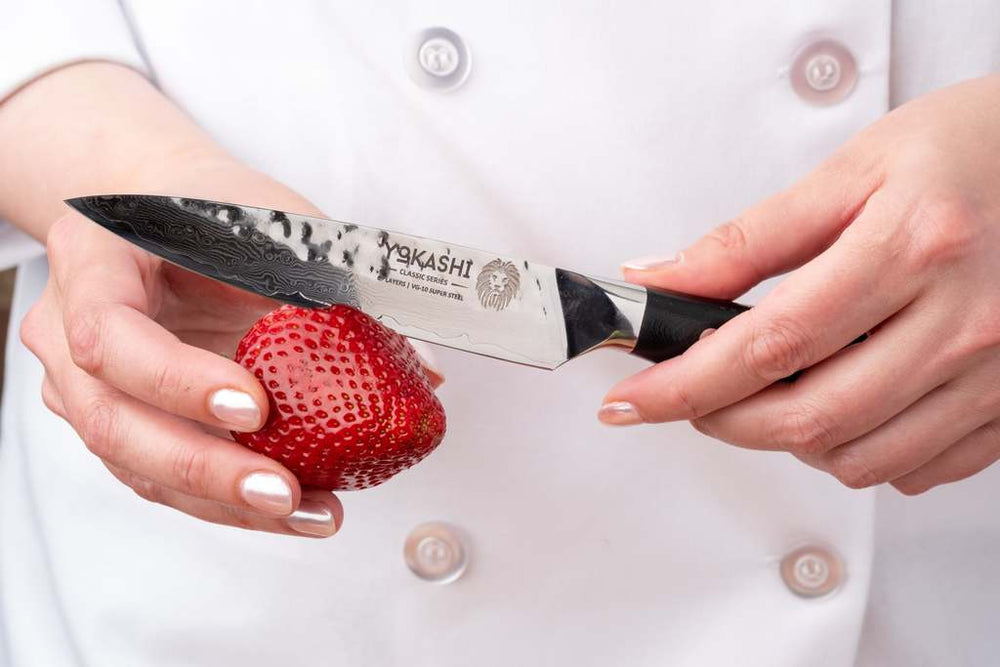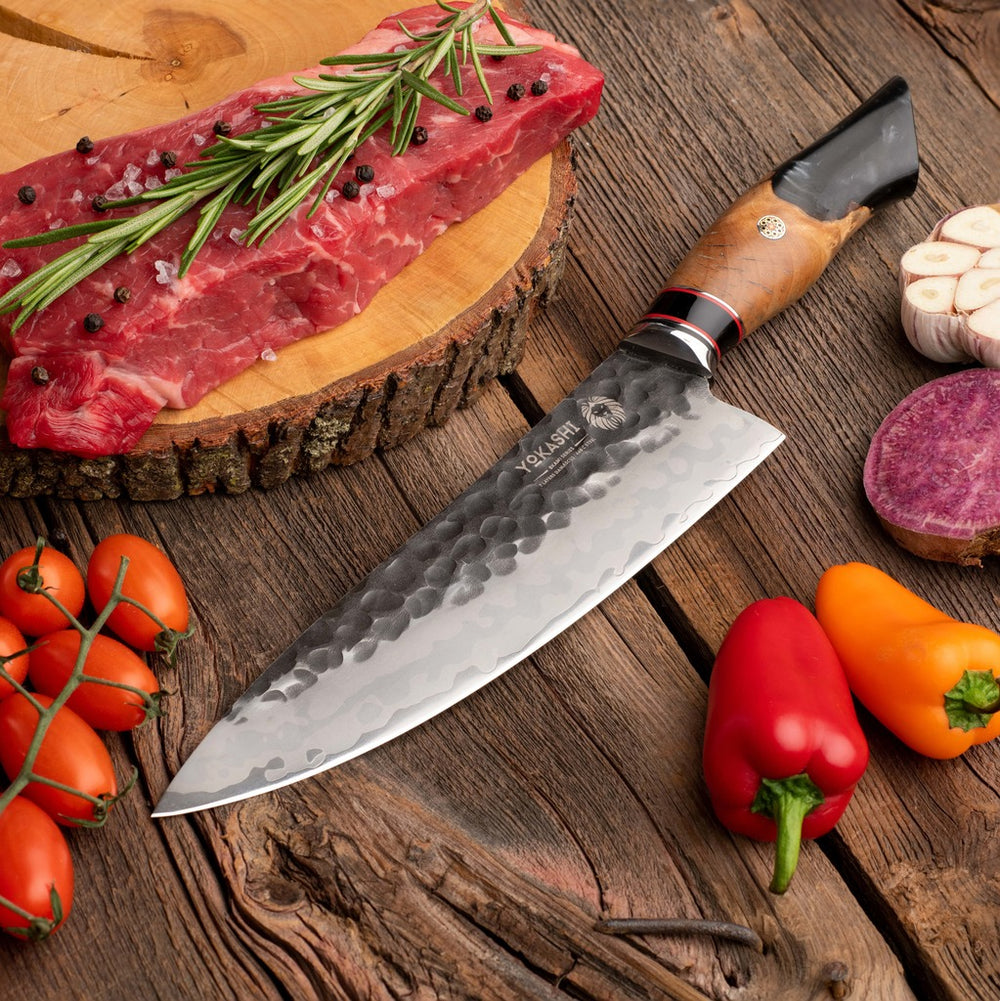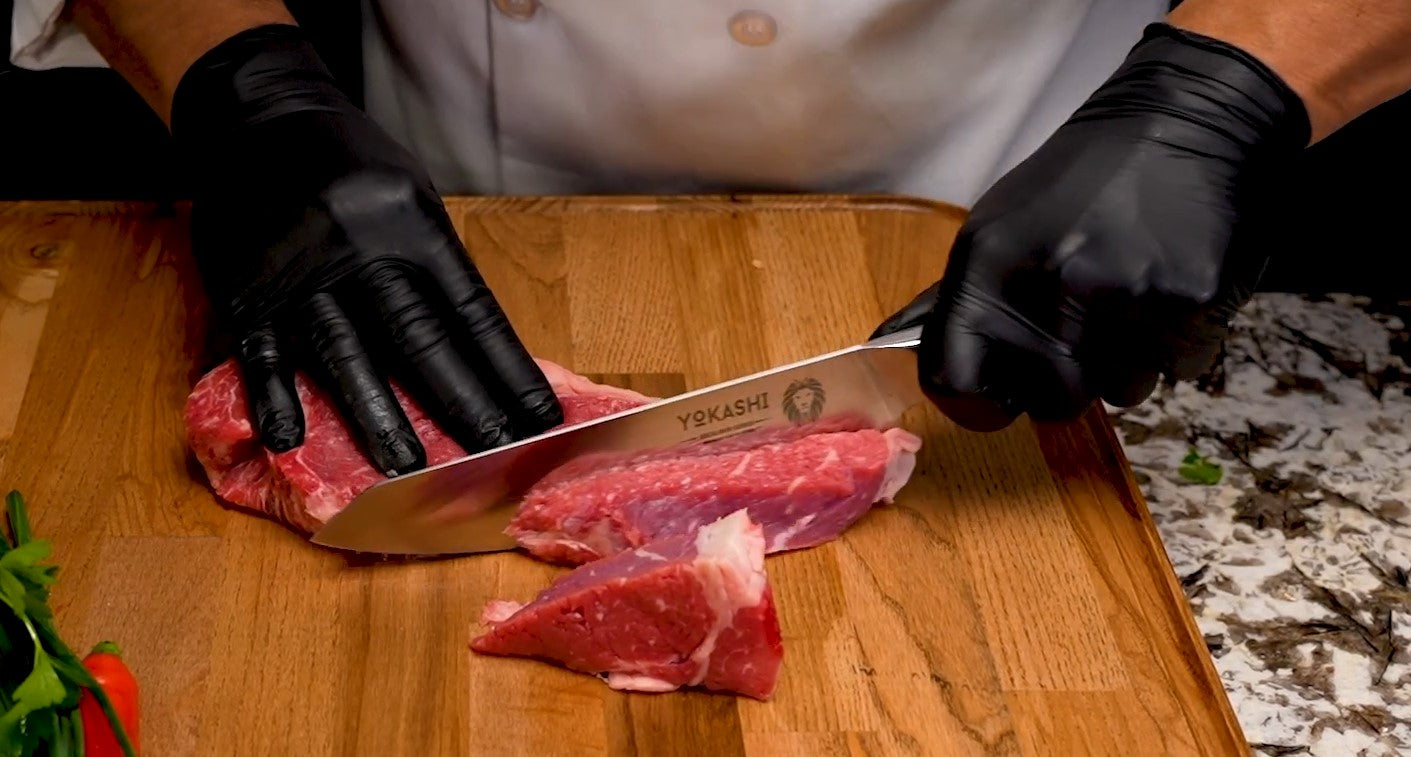
Paring Knives vs. Utility Knives: Which to Use?
TLDR:
- Paring knives are ideal for precision tasks, featuring small blades for peeling and trimming. Utility knives, with their longer blades, handle more versatile cutting needs, from slicing meats to chopping vegetables.
- The right knife enhances your cooking experience by offering control and comfort for specific tasks. Consider your cooking style and task requirements to choose between paring and utility knives.
- Investing in quality knives like those from Yokashi ensures durability and precision. This not only makes meal preparation easier but also elevates your overall kitchen experience.
Choosing the right knife for your kitchen tasks can make all the difference in your cooking experience. Whether you're peeling an apple or slicing a loaf of bread, having the right tool can enhance your precision and efficiency.
Today, we're focusing on two indispensable kitchen knives: paring knives and utility knives. These tools may seem similar at first glance, but they each have unique features and uses that make them ideal for specific tasks. Our goal is to help you understand the differences between these knives so you can decide which one to reach for when you're preparing meals.
By the end, you'll have a clearer grasp of how a paring knife can assist in delicate tasks like peeling and trimming, while a utility knife can handle a bit more heft with its versatility. Understanding these differences will improve your kitchen skills and make cooking more enjoyable.
Understanding Paring Knives and Utility Knives for Kitchen Precision
What is a Paring Knife

A paring knife like the Classic series Utility Paring Knife 5 inch is an essential tool in any kitchen, renowned for its compact size and precision. Typically featuring a small blade of about 3 to 5 inches, this knife is designed to fit comfortably in your hand, allowing for exceptional control. You'll find it invaluable for tasks that require detail-oriented work, like peeling an apple or devening shrimp.
Its lightweight nature makes it easy to maneuver, giving you the finesse needed for intricate tasks. When you think of a paring knife, picture it as the fine-tipped pen in your kitchen toolkit, perfect for tasks that demand accuracy and care.
Because of its precision, the paring knife is ideal for working with smaller ingredients, allowing you to make clean cuts without damaging delicate foods. This knife is especially favored by chefs and home cooks who often work with intricate garnishes or want to maintain uniformity in their food presentation. Its compact design allows you to make quick, precise movements, making it not only practical but also a joy to use in daily culinary tasks.
What is a Utility Knife

A utility knife, on the other hand, occupies a middle ground between your paring knife and a larger chef's knife. With a medium-sized blade typically ranging from 5.5 to 7 inches, it's designed for versatility. You'd turn to a utility knife when a chef knife feels too cumbersome, but a paring knife is too small.
A good example is the Dragon series Utility paring knife 5.5 inch. This is the go-to tool for slicing meats, cutting sandwiches, or chopping vegetables. Imagine it as the all-rounder in your culinary collection, ready to adapt to various kitchen tasks with efficiency. The utility knife is all about bridging the gap, handling tasks that require a moderate size and precision.
The utility knife's adaptability makes it an excellent option for those who want a single tool to perform a range of tasks, from slicing meats to cutting through vegetables with ease. Its slightly longer blade provides better leverage, making it easy to slice through thicker cuts without losing control. For those who value efficiency in the kitchen, the utility knife delivers both versatility and performance, ensuring you always have a reliable tool on hand for general kitchen tasks.
Comparing Paring Knives and Utility Knives
Differences Between Utility Knives and Paring Knives
The main difference between paring knives and utility knives lies in their blade size and intended use. While paring knives are designed for intricate tasks and small cuts, utility knives are more versatile, bridging the gap between paring and chef knives. Each knife offers unique benefits depending on the food preparation task at hand.
- Blade Length: Paring knives are usually 3-4 inches, while utility knives range from 5-7 inches.
- Precision vs. Versatility: Paring knives focus on precision tasks; utility knives handle a wider range of cutting jobs.
- Control: Paring knives are lightweight and suited for control in detailed work, while utility knives provide balanced weight for varied uses.
- Cutting Technique: Paring knives excel in peeling and trimming, while utility knives are ideal for slicing, dicing, and chopping.
- Food Types: Paring knives are great for smaller foods (like fruits and garlic), while utility knives are better for medium-sized foods (like tomatoes and meats).
These differences make each knife suitable for specific culinary roles, allowing for better efficiency in the kitchen. Paring knives, with their smaller size and focused design, offer precise control, especially helpful when working with intricate cuts or delicate foods. Utility knives, by contrast, bring versatility, easily handling everything from slicing vegetables to cutting meats, making them an excellent all-purpose tool.
In kitchens that value both precision and functionality, having both types of knives provides a well-rounded toolset. Paring knives enable chefs to accomplish finer tasks with ease, while utility knives fill the gap for medium-scale jobs, offering the balance of a smaller knife with the flexibility of a chef knife.
Uses of Paring and Utility Knives
Paring Knife Uses
The paring knife is ideal for detailed, precision work in the kitchen. With its smaller blade, it’s easy to handle for tasks that require control and delicacy.
- Peeling and Trimming: Perfect for peeling fruits and vegetables or trimming small produce.
- Deveining and Deseeding: Suitable for deveining shrimp or removing seeds from peppers.
- Creating Garnishes: Allows for intricate cutting when creating decorative elements for presentation.

Utility Knife Uses
The utility knife provides versatility and functionality across a wide range of kitchen tasks. It’s perfect for situations where a chef knife might be too large and a paring knife too small.
- Slicing Vegetables and Meats: Works well for medium-sized foods like tomatoes or thin cuts of meat.
- Sandwich Preparation: Ideal for slicing bread, meats, and vegetables when making sandwiches.
- General Cutting Tasks: Suitable for any general-purpose kitchen tasks, providing a reliable all-in-one solution.
Each knife’s unique design makes it indispensable for its intended uses, allowing for flexibility and efficiency in various culinary preparations.
Why Choose Yokashi Paring and Utility Knives for Your Kitchen
At Yokashi , we prioritize quality and precision in every knife, creating tools that enhance your cooking experience and offer long-lasting reliability. Our paring and utility knives are crafted with high-grade materials and ergonomic designs, ensuring they not only look beautiful but also perform exceptionally well in a variety of kitchen tasks. Each knife is made with attention to balance and sharpness, providing the ideal grip and control needed for fine culinary work.
Our selection includes paring knives designed for delicate tasks like peeling and trimming, while our utility knives offer versatility for slicing, dicing, and more. With Yokashi, you get knives that are carefully engineered for durability, with sharp blades that retain their edge, making meal prep efficient and enjoyable. Whether for intricate cuts or all-purpose needs, Yokashi knives are built to meet the demands of every cook, from beginner to professional.
Choosing the Right Knife for Your Kitchen
Paring and utility knives each play a unique role in the kitchen, offering precision and versatility to handle a range of tasks. Paring knives excel in detailed, small-scale work, while utility knives provide flexibility for medium-sized cuts and more general use. Together, these knives create a balanced and effective kitchen toolkit, supporting both creative and practical culinary pursuits.


